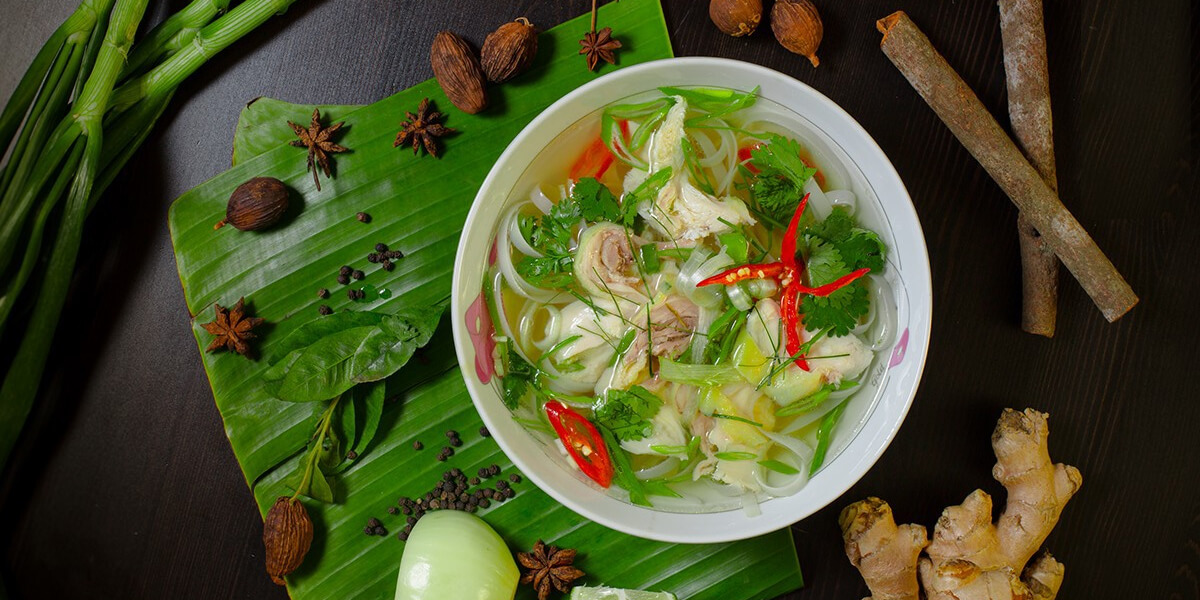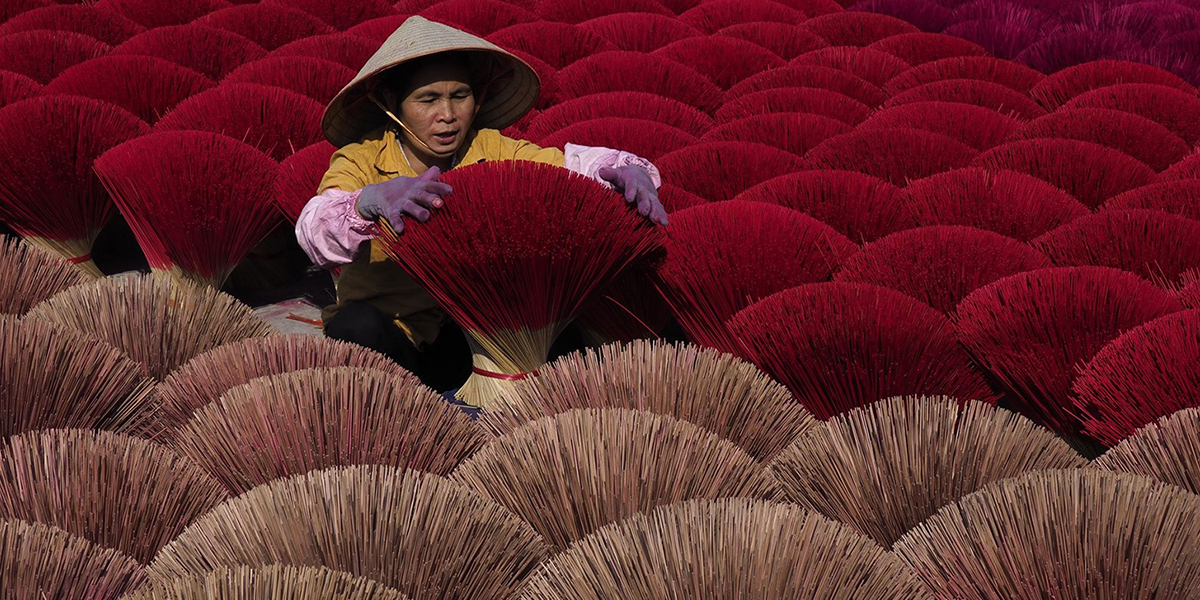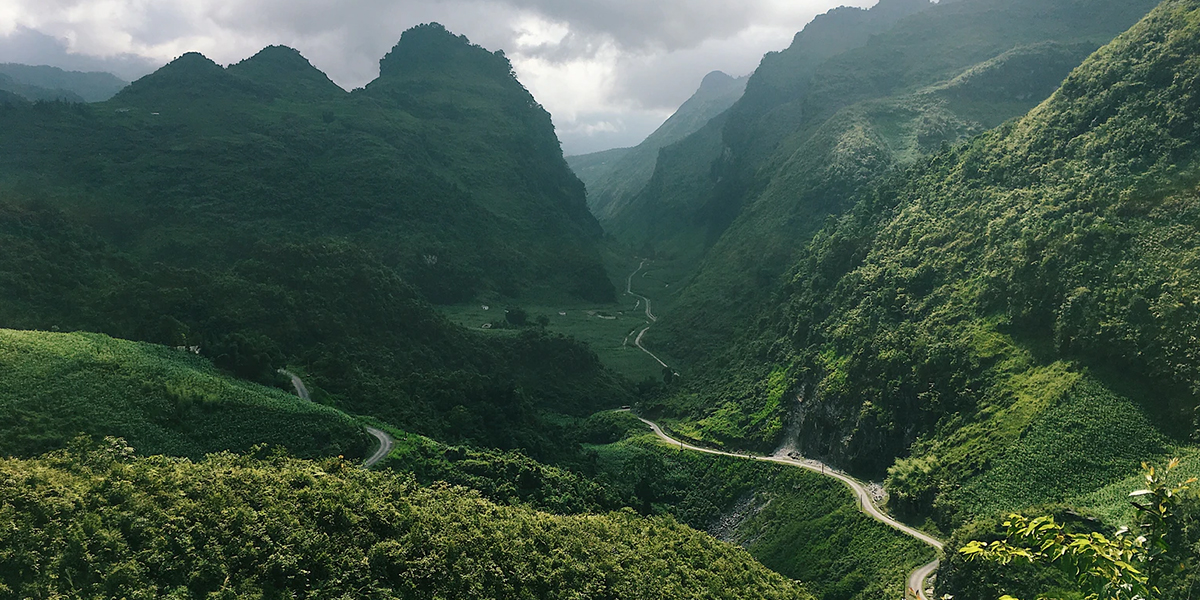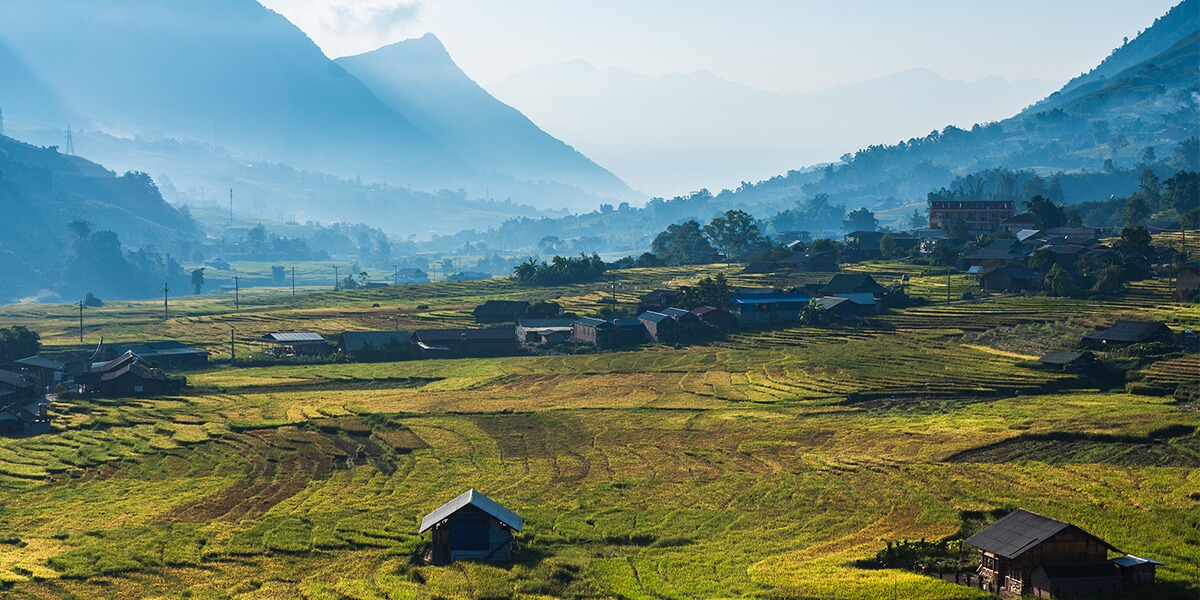Having a humid tropical climate and several highlands - the two most important factors to develop the coffee industry, Vietnam naturally becomes the world's second-largest exporter of coffee (after Brazil). Nowadays, Vietnam owns a number of high-end coffee brands instead of focusing on raw coffee exports in the past.
I - How many types of Vietnamese coffee beans?
Robusta and Arabica are the 2 most popular types of beans in Vietnam.
1 - Robusta
Robusta is very suitable for climate and soil in the Central Highland of Vietnam. Robusta coffee production accounts for more than 90% of Vietnam's total coffee production. The Robusta bean has a strong scent, no sourness, high caffeine content (about 2.5%) which is very suitable for Vietnamese taste. Robusta seed is smaller than Arabica. The content of caffeine in this kind of Vietnamese coffee is about 2.5%.
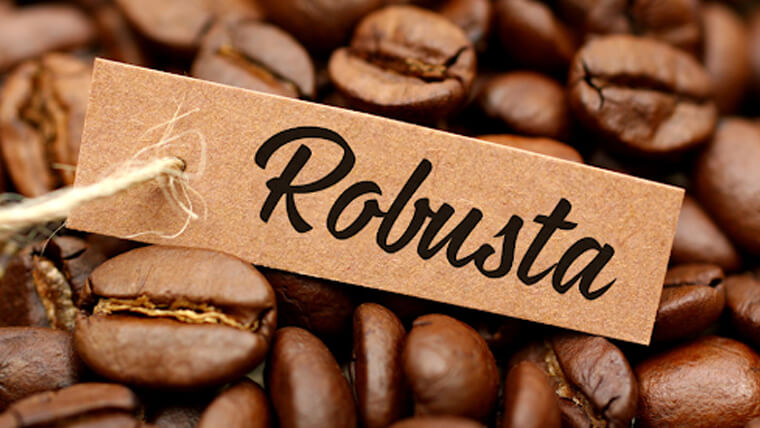
Robusta coffee beans - Source: Swbeverage
This type of Vietnamese robusta coffee beans must be dried directly not fermented, the bitterness predominates. This species is planted at the altitude of 600m in-climate weather and is present in several countries. Vietnam accounts for one-third of the world's coffee consumption.
Unlike most the Western countries where Arabica is prominent, most of the coffee consumed in the Vietnam market is Robusta; therefore this can be the explanation for the question “Why Vietnamese coffee is strong?”.
2 - Arabica
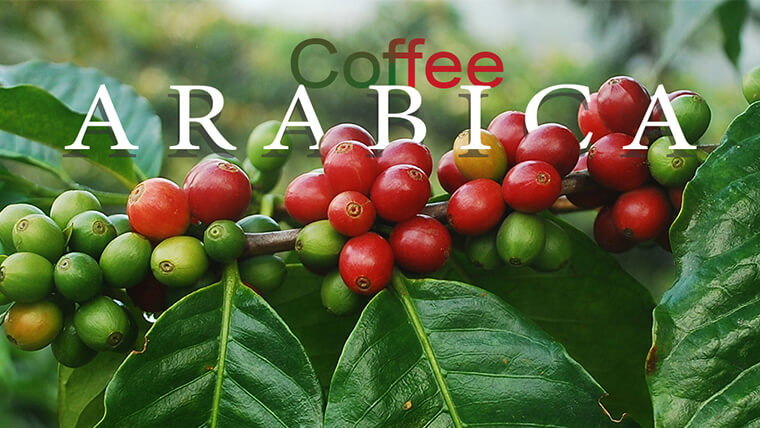
Arabica coffee beans - Source: Dungcucaphe
Arabica is one of the highest valued kinds of coffee all over the world because it contains less caffeine (about 1.5%), higher acidity, and a lighter, sweeter flavor. Normally, Arabica costs about twice as much as Robusta. Nonetheless, this high-valued kind of coffee is not common in areas of coffee plantations in Vietnam due to the unsuitable climate.
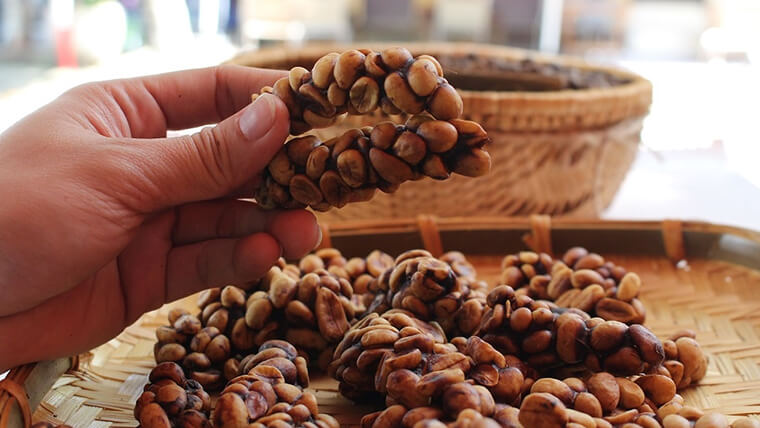
Weasel Coffee - Source: Caphechonhoatrang
Apart from the above mentioned, there are some other kinds of coffee beans in Vietnam such as Cherry (or Lyberica), Culi (or Peaberry), Moka, Kopi Luwak (weasel coffee)... but the quantity is not so high
II - The variety of Vietnamese instant coffee
Some of the instant coffee brands in Vietnam:
1 - G7 Coffee
G7 is the No.1 brand of instant coffee in Vietnam. This brand has released a variety of products such as G7 3in1, 2in1, G7 instant black,... So far, G7 coffee has been exported to 60 countries and appears on the counter in supermarkets in the USA, the UK, France, Germany, Japan, Korea, China,... G7 is also the only product served in international summits held in Vietnam such as APEC, ASEAN, ASEM, WEF,...
2 - Nescafé - one of the best Vietnamese instant coffee
Nestlé is an old coffee brand and the best seller for 5 continuous years. Some of the best known Nescafé products are Nescafé 3in1, Nescafé Café Viet, Nescafé Red Cup, and Nescafé Gold.
3 - Vinacafé
Vinacafé is the lead in efficiency and technology in manufacturing instant coffee in Vietnam. There are 4 main lines of products with typical flavors and features for customers to opt for including Vinacafé Gold Original, Vinacafé Gold Gu Đậm, and Vinacafé 3in1 Original Buon Me Thuot.
III - Vietnamese coffee culture - unique & appealing
Vietnamese people drink coffee in their own way. They don’t see coffee as a takeaway with an awakening effect like Americans but as a kind of culture: sipping and thinking. Sitting by a cup of coffee, taking small sips while reading newspapers, listening to music or chit-chatting with friends or working, self-reflecting about life,... is a part of Vietnamese culture and lifestyle.
Pavement coffee
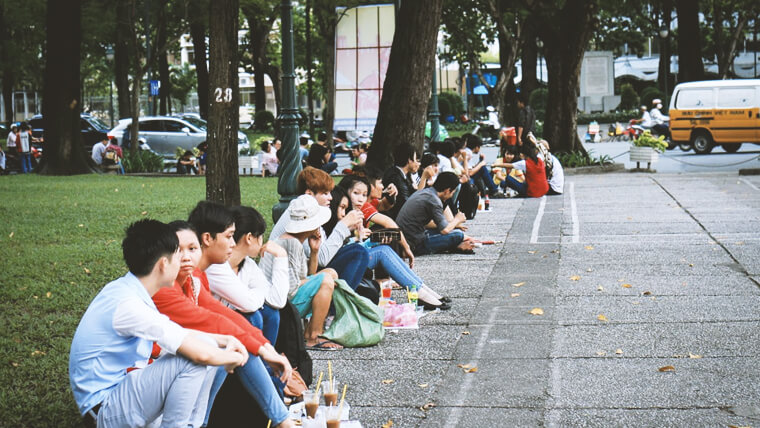
Pavement coffee in Ho Chi Minh City - Source: KBS
Vietnamese people would prefer to enjoy coffee in casual places like pavements. Some cups of Vietnamese coffee along with a dish of dried sunflower seeds or pumpkin seeds set on a small table beside a pair of smaller chairs is such a familiar scene that you can find in almost every corner in big cities of Vietnam. The customers of these cafes vary from intellectual classes to students, working classes, or travelers.
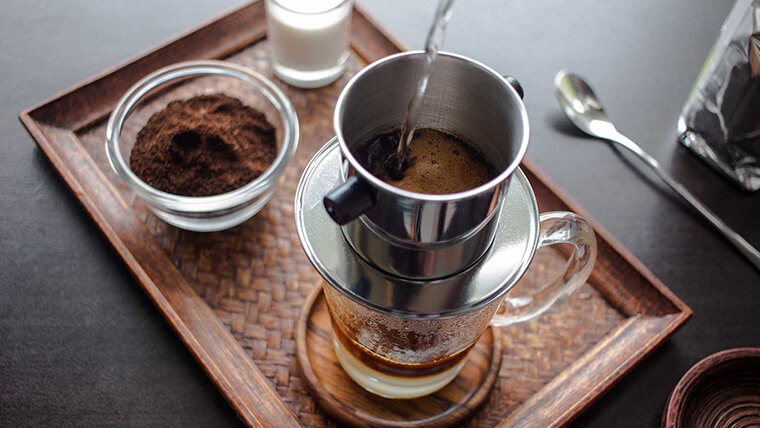
How to drink Vietnamese coffee like a local? Source: Phuc Long
Vietnamese people believe that you can acknowledge a person, his/her characteristics, and regional culture via the way he/she makes coffee. For instance, Southern people often wrap coffee on a cloth and cook it in a pot, they like taking it icy rather than hot while Northern ones would rather filter coffee, black or brown but all strong. A good cup of coffee in Vietnam must be strong, naturally flavored, slightly sour, greatly oily and particularly giving out the scent of almond, fruit, and butter.
Vietnamese drip-filter black coffee
Drip-filter coffee seems to be the most favorite drink of the Vietnamese. The feeling of waiting for every single drop of coffee to fall down is very interesting and it is even more fascinating to taste the accomplishment. It can be a cup of hot black coffee, added with a little condensed milk; tasting hot or icy is up to your choice.
Vợt coffee - a famous coffee in Vietnam
If you arrive in Ho Chi Minh City, you should not miss a chance to try a cup of Vợt coffee (racket coffee), the drink that is said to help keep the soul of this city. To have a yummy cup of racket coffee, besides selecting quality coffee seeds, you must pay attention to water. According to experienced bartenders, the water needs to leave still for 2 days until the dust has deposited and the scent of chemicals has given out before being used to make coffee. When making, the artist pours a few ground coffee into a racket and dips it into a boiling water pot. Coffee is brewed for 5 - 10 minutes. Afterward, it is poured into an iron teapot for easy serving.
Egg coffee - a signature of Hanoi
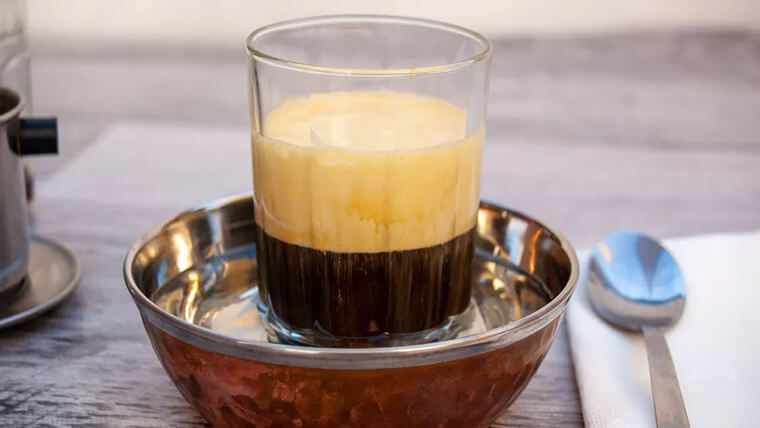
Egg coffee is the best Vietnamese coffee - Source: Thespruceeats
There is also a signature which is well-known as Vietnamese egg coffee. The egg yolk is scrambled into the foam with a little bit of honey and put on the cup of black coffee. The mixture is warmed up by a cup of hot water to keep its nice taste and flavor. The egg foam mixed with coffee creates a tempting tawny. It can be tasted both icy or hot but if you want the original flavor, you should drink it hot.
It may interest you: The best places to enjoy egg coffee in Hanoi
IV - Vietnamese coffee history
Arabica was the first type of coffee to appear in Vietnam in 1857 thanks to a French missionary priest. Firstly, it was experimentally grown at Cathedral churches in some Northern provinces. Afterward, this plant found its way to the provinces of Thanh Hoa, Nghe An, Ha Tinh and then spread over to the Central provinces such as Quang Tri, Quang Binh. When the war ended, Arabica fields here still remained. Therefore, the concentration of this species is very high.
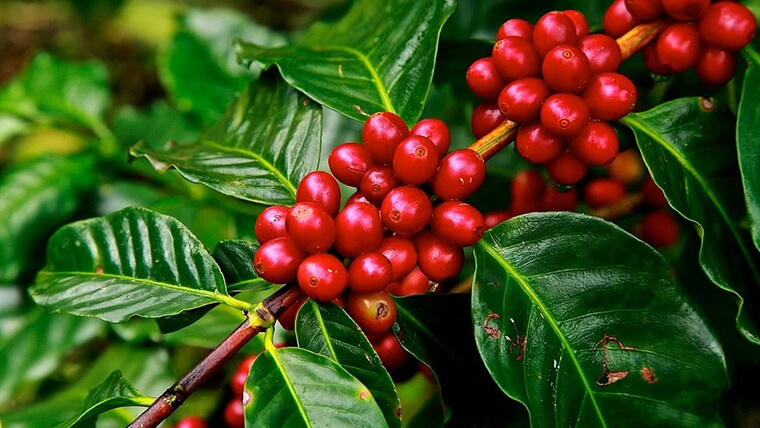
History of coffee in Vietnam - Source: Caphenguyenchat
Finally, coffee entered the Southern Highland and Southeast region and people started to realize that the Highland is the most favorable place to plant this cultivar. After Arabica was introduced in Vietnam in 1857, in 1908, the French brought 2 more species into Vietnam which were Robusta and Liberica. After a while, the Western noticed that Arabica didn’t bring much profit, hence they imported Robusta from Congo and planted it in the Central Highlands.
In the Central Highlands, Vietnamese coffee was highly developed, the area is increasingly expanding. Nowadays, The Central Highland is the place with the biggest area of Robusta growing in Vietnam both in scale and reputation. Nowhere in Vietnam can you find coffee that is as famous and legendary as in Buon Ma Thuot City, Dak Lak Province. Products made from Robusta have become the symbol and the pride of the Central Highland, especially Buon Ma Thuot City, in the global economy.
V - Vietnamese coffee plantation & export
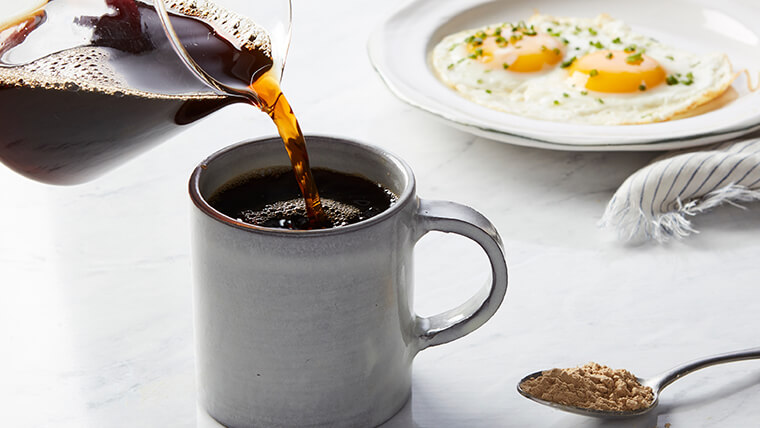
Current manufacture and production - Source: Goop
1 - Major coffee-growing areas
The Central Highlands, particularly four provinces: Dak Lak, Kon Tum, Gia Lai and Dak Nong, is the region specializing in Robusta cultivation with a total of 530,000 hectares. This type of coffee is often harvested in the period from October to December, in some places it may be collected a bit later, from November to January. Vietnamese Arabica coffee is mainly planted in Lam Dong Province where conditions like atmosphere, altitude, and soil are most favorable for its development. Arabica is harvested 1 to 2 months sooner than Robusta, normally from September to November.
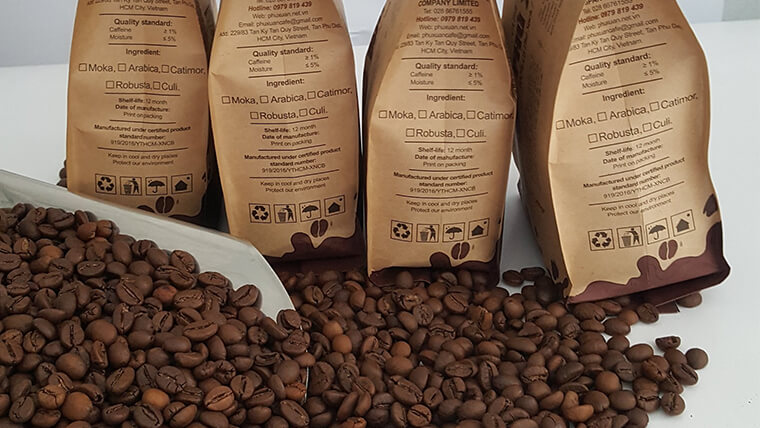
Culi coffee beans - Source: Phuxuan
2 - Vietnamese coffee export
Coffee is an important industry, comprising 3% of Vietnam GDP; export turnover in recent years all reach $3 billion. In the past few years, although the world economy has gone through several difficult times, resulting in the decrease in purchasing power, Vietnam still maintains an encouraging coffee export growth rate of 8.2%/year with an average turnover of $3.13 billion/year in the period 2011 - 2018, accounting for 15% of the country total agriculture export turnover.
As the second world largest coffee production and export, coffee in Vietnam has been exported to more than 80 countries and territories, encompassing 14.2% of the global green coffee market (the second after Brazil). Roasted and ground coffee and instant coffee export makes up for 9.1% of the market (the fifth after Brazil, Indonesia, Malaysia, and India), paving the way for Vietnam coffee to penetrate deeper into the international market via free trade agreements. The EU is the largest Vietnamese coffee market in terms of consumption - accounting for 40% of the total amount and 38% of the national total export turnover, followed by Southeast Asia with 13% of the total amount and the total turnover.
In conclusion, coffee is not only a highlight in the culture and cuisine of Vietnam but also a potential and profitable industry, bringing this country closure to international friends. If you have a chance to visit this beautiful S-shaped country, don't forget to take a cup of coffee and enjoy the hustle and bustle pace of life there. Moreover, Vietnamese coffee might be the perfect souvenir for your loved one!







 — Quan Nguyen
— Quan Nguyen



